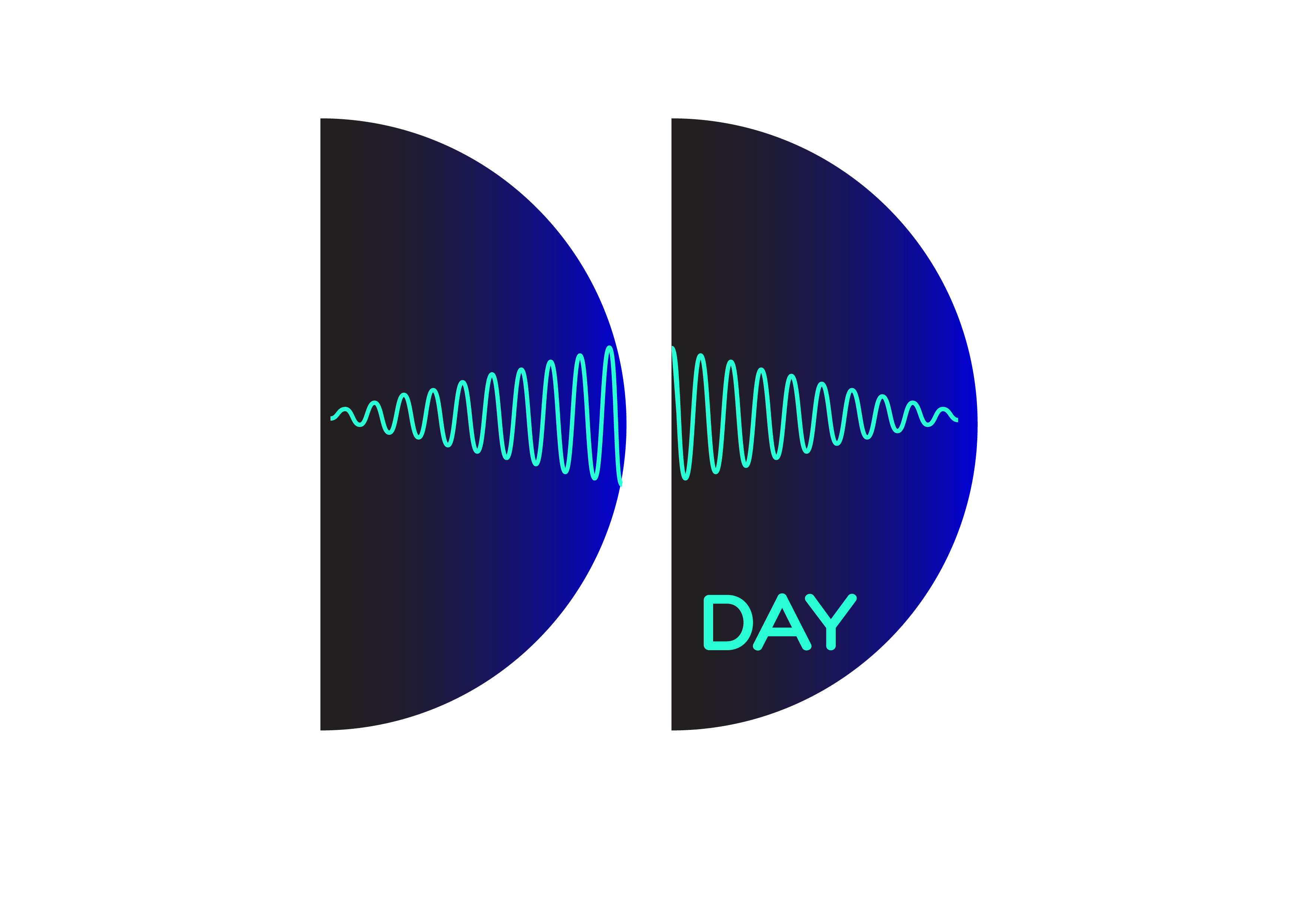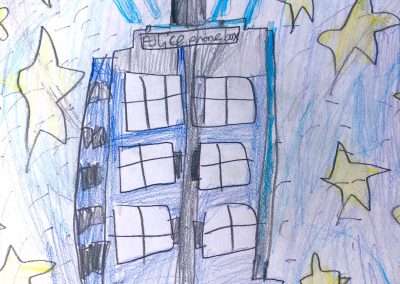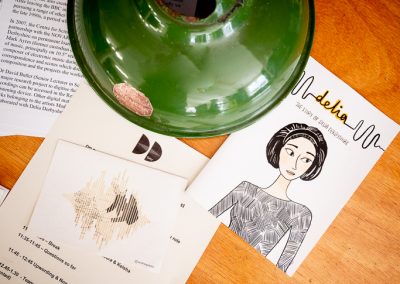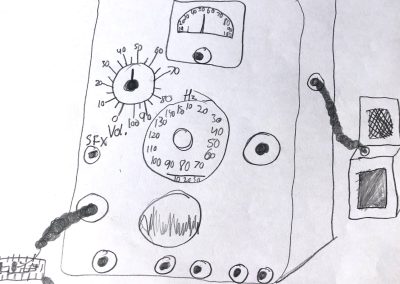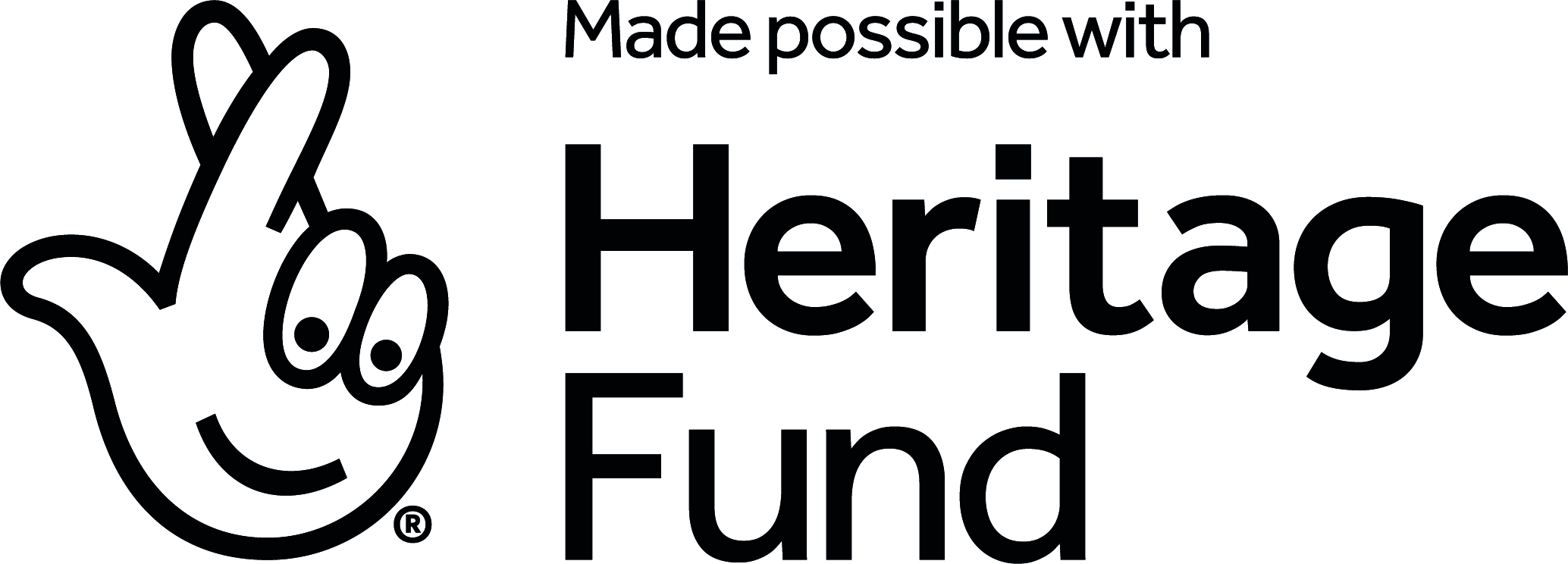A guest blog post by one of our DD Day 2023 volunteers, Will Davis
While working at the BBC as a trainee Studio Manager, Delia Derbyshire asked to be attached to the Radiophonic Workshop. This was set up to create music and sound effects for BBC programming, using tape splicing, manipulating recorded sounds, and even including analogue synthesis. In 1962, while other companies were refusing to hire women in their studios, Delia joined the ranks of Daphne Oram and Maddalena Fagandini at the Workshop, becoming one of the key figures in the development of British electronic music.
Delia’s process often involved using found sounds rather than traditional instruments. Her self-professed favourite was a metal Coolicon lampshade, which reverberated like a gong when struck. In the BBC Radiophonic Workshop, there was also a fire extinguisher, which was branded “D#” in marker pen for the pitch it produced. In addition, Delia used the Workshop’s many oscillators which were not intended as musical instruments. They used these machines to synthesise basic tones – when recorded and manipulated, these formed new and strange textures. These new frontiers of sound were especially well-suited to the futuristic landscapes of science fiction. Indeed, in 1963, Delia was tasked with producing the theme for a new series called “Doctor Who”.
The theme was originally sketched by Ron Grainer on a single side of A4 paper, including descriptive annotations such as “wind bubble” and “cloud”. These loose directions gave Delia’s creativity free rein. Alongside assistant engineer Dick Mills, Delia composed the piece with three key elements. First was the bassline, made by recording a plucked wire and slowing down the tape to change the pitch. Layered on top of the bassline was the iconic melody, produced, according to Dick Mills, using “a signal generator machine that they used to test the acoustics for the studio”. Amidst this, bursts of white noise decorated the score, embodying the clouds mentioned in Grainer’s draft. There were additional embellishments too – a series of throbbing, bubbling low-frequency drones under the theme’s ‘middle eight’ section, created by a beat frequency generator known in the Workshop as the ‘wobbulator’. Each layer was made by splicing together fragments of tape, with many pieces of tape containing the information for a single note. The final cut was made by playing these different layers at the same time and recording them to one master tape.
Immediately, Delia and Dick Mills, her assistant engineer, noticed a single out-of-tune note in the final version. Working with tape meant that this note had to be replaced manually. They therefore unwound the entire tape over the length of the Maida Vale building’s corridor and proceeded to inspect each note individually to determine the odd one out. Once again, after the pilot episode aired, Derbyshire was instructed to make minor edits to the piece, including the removal of a thunder clap sound. Even minor revisions to the theme tune involved a painstaking process of manually splicing the tape.
Against his wishes, Ron Grainer was listed as the sole composer of the Doctor Who theme. However, Delia’s influence is present throughout the history of electronic music. She collaborated with musician Peter Kember in the years leading up to her death in 2001, and her work has been and continues to be celebrated by artists globally – from Pink Floyd and Cosey Fanni Tutti to a number of hip hop tracks featuring samples of her work, Aphex Twin, Nainita Desai and Nicole Lizée – not least by women working in electronic music, who look to Delia’s story and legacy as a continuing source of inspiration.
